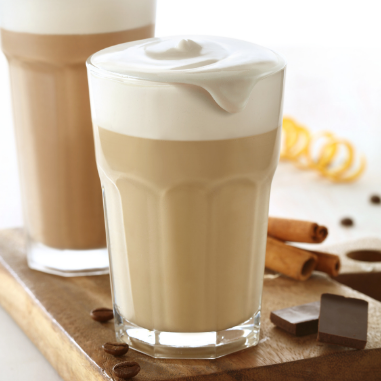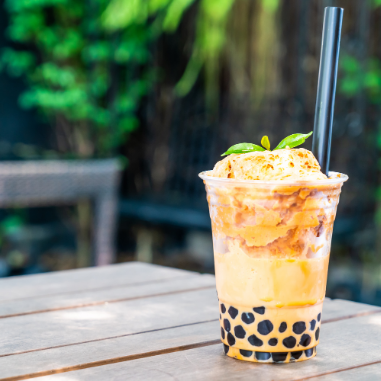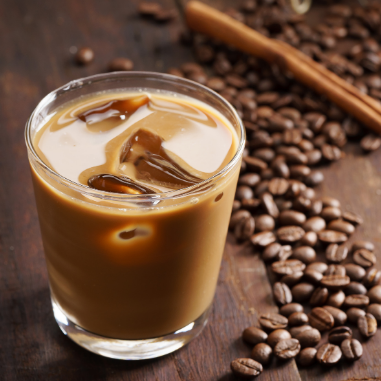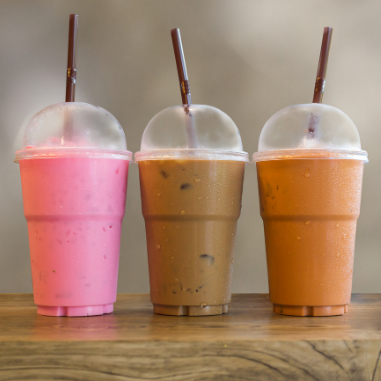
Coffee and tea
Revitalise your coffee and tea products
Asia-Pacific (APAC)'s market for coffee and tea is booming. With 50% of the global market share in tea in 2020, APAC continues to lead in this sector. As for coffee, APAC has become the second largest market in the world, accounting for 19.8% of global sales in 2020.1
As consumers create and settle into their domestic cocoons amidst the pandemic, they are keen to bring some much-loved comforts into their homes. This includes indulgences like the coffee and tea that they enjoy sipping in cafes. Retail brands are seeking inspiration from social media and trends such as Dalgona coffee and the DIY bubble milk tea craze to deliver new innovations.
Convenience continues to be the top driver for instant and ready-to-drink (RTD) coffee and tea’s popularity, with RTD formats in APAC accounting for 82.1% and 71% of global market share in coffee and tea respectively in 2020.1 In addition, APAC’s market share for coffee mix accounts for 70% of global sales, while its instant tea occupies 94% of the global market value.
The versatility of coffee and tea beverages means that health factors such as reduced sugar, low fat and added dietary fibre are also drivers powering the innovation for RTD coffee and tea.


Milky Indulgence
Consumers are constantly seeking to experience next-level indulgence with their beverages. High quality café-styled lattes and cappuccinos are amongst the decadent beverages preferred by consumers. Their premium and indulgent texture is achieved through milk. which creates a more premium mouthfeel, thicker texture and a velvety smoothness. Milk proteins help to reduce a coffee’s acidity and balance its potentially ashy, bitter, and acidic profile to achieve a more harmonious and widely-accepted taste as compared to black coffee.

Mix And Pair For More Excitement
Increased consumer demand for more new and exciting products has resulted in interesting, out-of-the-box innovations. Hybrid beverages – the combination of two or more drink categories in a beverage – is one such innovation. The potential is such that even soft drink and dairy giants are venturing into the coffee and tea sector to bring in more varieties and take advantage of the boom.

Scale Down On Sugar
Sugar has drawn increasing focus given the potential dangers of excessive consumption, and beverages are often called out as key carriers of excessive sugar. With coffee and tea being regularly consumed, sugar reduction in these drinks has become a priority for food manufacturers. In June 2018, the Australian Beverages Council announced a pledge that will see the non-alcoholic beverage industry commit to a 20 per cent reduction in sugar across the industry’s portfolio by 2025. This announcement has hastened the development of sugar-reduced solutions, and brands are launching more sugar-free options to diversify their offerings.

Stay Affordable To Stay Competitive
Balancing costs whilst addressing the increasing demands of consumers with minimal changes to the manufacturing process is a constant challenge. Coffee creamers is one way to address this issue. Creamers can be formulated to deliver exciting texture and taste profiles that create luxurious, sophisticated products, but in a cost-effective manner.
Sweetened condensed creamers, non-dairy creamers and evaporated creamers can be directly added to hot beverages as cost-effective milk substitutes that also have the advantage of a longer shelf life, thereby allowing consumers to extend the use of their hot beverages.
Cost savings can also be achieved by using texturisers and stabilisers to replace everyday ingredients such as dairy solids like milk proteins and fat. Texturisers and stabilisers build structure and body to introduce a creaminess that mimics the functionality of milk solids.

Go Plant-Based
As consumers diversify their meals away from animal-sourced ingredients for reasons of health and sustainability, plant-based options across nearly all food and drink categories are performing positively, with creamers and RTD coffees and teas also following suit.
Having many plant-based milk options available means that manufacturers are expanding their portfolios by using trending alternatives such as oat and nut to make plant-based creamers, with new protein sources such as peas increasingly emerging in the market.
1. Euromonitor 2020 (Euromonitor International 2020).
